Load-Swing Attenuation in a Quadcopter–Payload System Through Trajectory Optimisation
Abstract
1. Introduction
1.1. Related Work
1.2. Contributions
2. System Model
2.1. Model Assumptions
2.2. Swung Payload Equations of Motion
2.3. Fixed-Arm Equations of Motion
2.4. Trajectory Optimisation Scheme
3. Controller Design
3.1. Visual Servoing Controller
3.1.1. AprilTag Detection Performance
3.1.2. Control Strategy
| Algorithm 1 Approach Trajectory. , and represent the initial position of the quadcopter relative to the target, and represents the trajectory length in seconds. | |
| 1: procedure GenerateTrajectory() | |
| 2: ; ; ; ; Hz | |
| 3: | ▹ Maximum chosen to be smaller than tag size |
| 4: | |
| 5: | |
| 6: | ▹ Time vector with N samples |
| 7: ; ; | |
| 8: | |
| 9: Forward Trajectory: | ▹ Approach target in x-axis at if target centred |
| 10: | |
| 11: where | |
| 12: | |
| 13: Lateral and Vertical Trajectory: | ▹ Track target in y-axis and z-axis at |
| 14: for | |
| 15: for | |
| 16: return | |
| 17: end procedure | |
3.2. Load Swing Attenuation Controller
3.2.1. Feedforward Controller
3.2.2. Feedback Controller
3.3. Trajectory Verification
3.3.1. Goal State Stability
3.3.2. Funnel Simulation
3.4. Controllability and Observability
4. Results
4.1. Model Simulation
4.2. Approach Task
4.2.1. Gazebo Simulation Environment
4.2.2. Real-World Flight Test Configuration
4.3. Approach Test Results
4.4. Load Swing Attenuation
Model Simulation
5. Discussion
Author Contributions
Funding
Institutional Review Board Statement
Informed Consent Statement
Data Availability Statement
Conflicts of Interest
Appendix A
Appendix A.1. Equations of Motion Derivation
Effect of Aerodynamic Drag on Payload Motion
Appendix A.2. Equations of Motion Matrices
Appendix B
Appendix B.1. Cuda-Accelerated AprilTag Detection
Appendix B.1.1. Acceleration Opportunities
Appendix B.1.2. Decimation and Thresholding
Appendix B.1.3. Connected Component Labelling
Appendix B.1.4. Clustering
Appendix B.1.5. Integration with AprilTag3
Appendix B.2. Gazebo Model and Physical Hardware
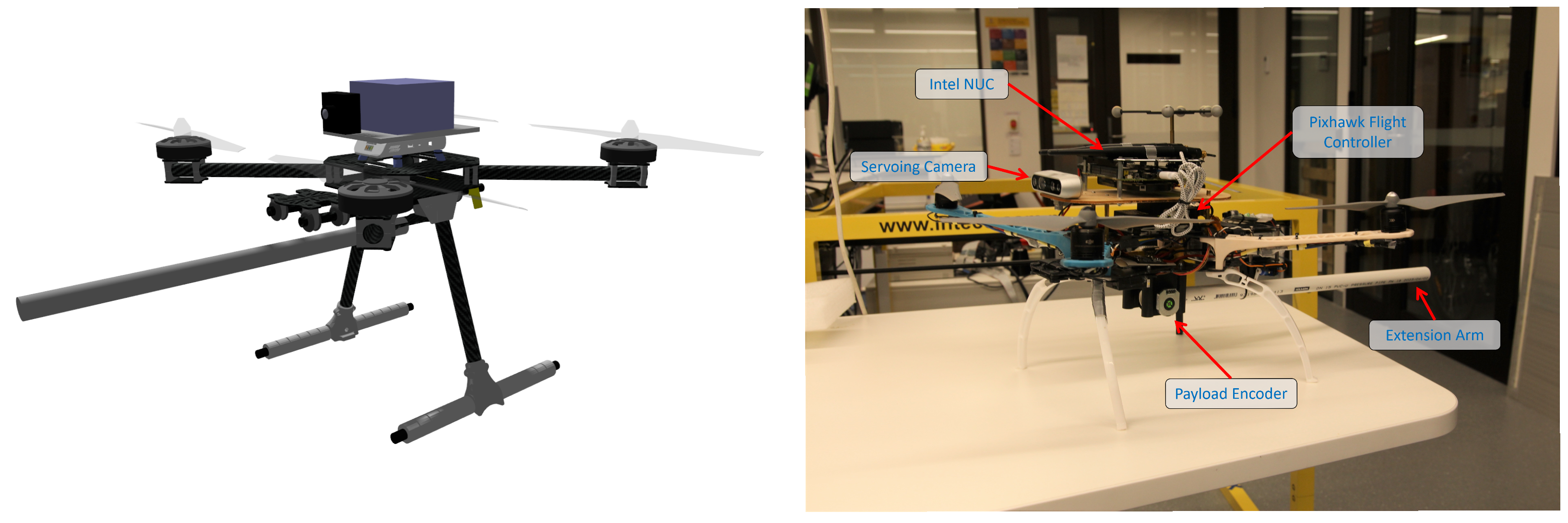
References
- Carter, S.; Johnson, T.; Lidel, S.; Riedel, R.; Tusch, L. Drone Delivery: More Lift than You Think; McKinsey & Company: New York, NY, USA, 2022. [Google Scholar]
- Bauersfeld, L.; Scaramuzza, D. Range, Endurance, and Optimal Speed Estimates for Multicopters. arXiv 2021, arXiv:2109.04741. [Google Scholar] [CrossRef]
- Sadr, S.; Moosavian, S.; Zarafshan, P. Dynamics Modeling and Control of a Quadrotor with Swing Load. J. Robot. 2014, 2014, 265897. [Google Scholar] [CrossRef]
- Weijers, M. Minimum Swing Control of a UAV with a Cable Suspended Load. Master’s Thesis, University of Twente, Enschede, The Netherlands, 2015. [Google Scholar]
- Urbina-Brito, N.; Guerrero-Sánchez, M.; Valencia-Palomo, G.; Hernández-González, O.; López-Estrada, F.; Hoyo-Montaño, J. A Predictive Control Strategy for Aerial Payload Transportation with an Unmanned Aerial Vehicle. Mathematics 2021, 9, 1822. [Google Scholar] [CrossRef]
- Cicolani, L.; Kanning, G. Equations of Motion of Slung-Load Systems, Including Multilift Systems; Technical Paper; NASA Ames Research Center: Mountain View, CA, USA, 1992. [Google Scholar]
- Bisgaard, M.; Bendtsen, J.; la Cour-Harbo, A. Modeling of Generic Slung Load System. J. Guid. Control Dyn. 2009, 32, 573–585. [Google Scholar] [CrossRef]
- Jain, R.P.K. Transportation of Cable Suspended Load Using Unmanned Aerial Vehicles: A Real-Time Model Predictive Control Approach. Master’s Thesis, TU Delft, Delft, The Netherlands, 2015. [Google Scholar]
- Shankar, A.; Elbaum, S.; Detweiler, C. Towards In-Flight Transfer of Payloads Between Multirotors. IEEE Robot. Autom. Lett. 2020, 5, 6201–6208. [Google Scholar] [CrossRef]
- Keipour, A.; Pereira, G.; Bonatti, R.; Garg, R.; Rastogi, P.; Dubey, G.; Scherer, S. Visual Servoing Approach to Autonomous UAV Landing on a Moving Vehicle. Sensors 2022, 22, 6549. [Google Scholar] [CrossRef] [PubMed]
- Keshmiri, M. Image Based Visual Servoing Using Trajectory Planning and Augmented Visual Servoing Controller. Ph.D. Thesis, Concordia University, Montreal, QC, Canada, 2014. [Google Scholar]
- De Crousaz, C.; Farshidian, F.; Buchli, J. Aggressive Optimal Control for Agile Flight with a Slung Load; Technical Report; ETH Zurich, Agile and Dexterous Robotics Lab: Zürich, Switzerland, 2014. [Google Scholar]
- Us, K.; Cevher, A.; Sever, M.; Kirli, A. On the Effect of Slung Load on Quadrotor Performance. Procedia Comput. Sci. 2019, 158, 346–354. [Google Scholar] [CrossRef]
- Pratama, G.; Masngut, I.; Cahyadi, A.; Herdjunanto, S. Robustness of PD control for transporting quadrotor with payload uncertainties. In Proceedings of the 2017 3rd International Conference on Science and Technology—Computer (ICST), Yogyakarta, Indonesia, 11–12 July 2017; Volume 7, pp. 11–15. [Google Scholar] [CrossRef]
- Alothman, Y.; Gu, D. Quadrotor transporting cable-suspended load using iterative Linear Quadratic regulator (iLQR) optimal control. In Proceedings of the 2016 8th Computer Science and Electronic Engineering (CEEC), Colchester, UK, 28–30 September 2016; Volume 9, pp. 168–173. [Google Scholar] [CrossRef]
- Bangura, M.; Mahony, R. Real-time Model Predictive Control for Quadrotors. IFAC Proc. Vol. 2014, 47, 11773–11780. [Google Scholar] [CrossRef]
- Yuan, X.; Ren, X.; Zhu, B.; Zheng, Z.; Zuo, Z. Robust H∞ Control for Hovering of a Quadrotor UAV with Slung Load. In Proceedings of the 2019 12th Asian Control Conference (ASCC), Kitakyushu, Japan, 9–12 June 2019; pp. 114–119. [Google Scholar]
- Guerrero-Sánchez, M.; Lozano, R.; Castillo, P.; Hernández-González, O.; García-Beltrán, C.; Valencia-Palomo, G. Nonlinear Control Strategies for a UAV Carrying a Load with Swing Attenuation. Appl. Math. Model. 2021, 91, 709–722. [Google Scholar] [CrossRef]
- Potdar, N. Online Trajectory Planning and Control of a MAV Payload System in Dynamic Environments: A Non-Linear Model Predictive Control Approach. Master’s Thesis, TU Delft, Delft, The Netherlands, 2020. [Google Scholar]
- de Almeida, M.; Raffo, G. Nonlinear Control of a TiltRotor UAV for Load Transportation. IFAC-PapersOnLine 2015, 48, 232–237. [Google Scholar] [CrossRef]
- Faust, A.; Palunko, I.; Cruz, P.; Fierro, R.; Tapia, L. Learning swing-free trajectories for UAVs with a suspended load. In Proceedings of the 2013 IEEE International Conference on Robotics and Automation, Karlsruhe, Germany, 6–10 May 2013; Volume 5, pp. 4902–4909. [Google Scholar] [CrossRef]
- Panetsos, F.; Karras, G.; Kyriakopoulos, K. A Deep Reinforcement Learning Motion Control Strategy of a Multi-rotor UAV for Payload Transportation with Minimum Swing. In Proceedings of the 2022 30th Mediterranean Conference on Control and Automation (MED), Vouliagmeni, Greece, 28 June–1 July 2022; Volume 6, pp. 368–374. [Google Scholar] [CrossRef]
- NVIDIA Corporation. CUDA Toolkit; NVIDIA Corporation: Santa Clara, CA, USA, 2024. [Google Scholar]
- Olson, E. AprilTag 3. 2023. Available online: https://github.com/AprilRobotics/apriltag (accessed on 15 June 2025).
- Kelly, M. An Introduction to Trajectory Optimization: How to Do Your Own Direct Collocation. SIAM Rev. 2017, 59, 849–904. [Google Scholar] [CrossRef]
- Tedrake, R. Underactuated Robotics. 2024. Available online: https://underactuated.mit.edu/ (accessed on 11 June 2025).
- Becerra, V. Solving complex optimal control problems at no cost with PSOPT. In Proceedings of the 2010 IEEE International Symposium on Computer-Aided Control System Design, Yokohama, Japan, 8–10 September 2010; pp. 1391–1396. [Google Scholar] [CrossRef]
- Chen, C. Linear System Theory and Design, 3rd ed.; Oxford University Press, Inc.: New York, NY, USA, 1998. [Google Scholar]
- Bryson, A.; Ho, Y. Applied Optimal Control; Blaisdell: New York, NY, USA, 1969. [Google Scholar]
- Tobenkin, M.; Manchester, I.; Tedrake, R. Invariant Funnels around Trajectories using Sum-of-Squares Programming. arXiv 2010, arXiv:1010.3013. [Google Scholar] [CrossRef]
- Reist, P.; Tedrake, R. Simulation-based LQR-trees with input and state constraints. In Proceedings of the 2010 IEEE International Conference on Robotics and Automation, Anchorage, AK, USA, 3–7 May 2010; pp. 5504–5510. [Google Scholar] [CrossRef]
- ISO/IEC 14882:2011; Information Technology—Programming Languages—C++. International Organization for Standardization: Geneva, Switzerland, 2011.
- PX4 Development Team. PX4 Autopilot Software. 2025. Available online: http://px4.io (accessed on 15 June 2025).
- Klausen, K.; Fossen, T.; Johansen, T. Nonlinear control of a multirotor UAV with suspended load. In Proceedings of the 2015 International Conference on Unmanned Aircraft Systems (ICUAS), Denver, CO, USA, 9–12 June 2015; Volume 6, pp. 176–184. [Google Scholar] [CrossRef]
- Playne, D.P.; Hawick, K. A New Algorithm for Parallel Connected-Component Labelling on GPUs. IEEE Trans. Parallel Distrib. Syst. 2018, 29, 1217–1230. [Google Scholar] [CrossRef]
- NXP Semiconductors. NXP HoverGames Drone Kit Including Flight Controller and Peripherals; NXP Semiconductors: Eindhoven, The Netherlands, 2024. [Google Scholar]
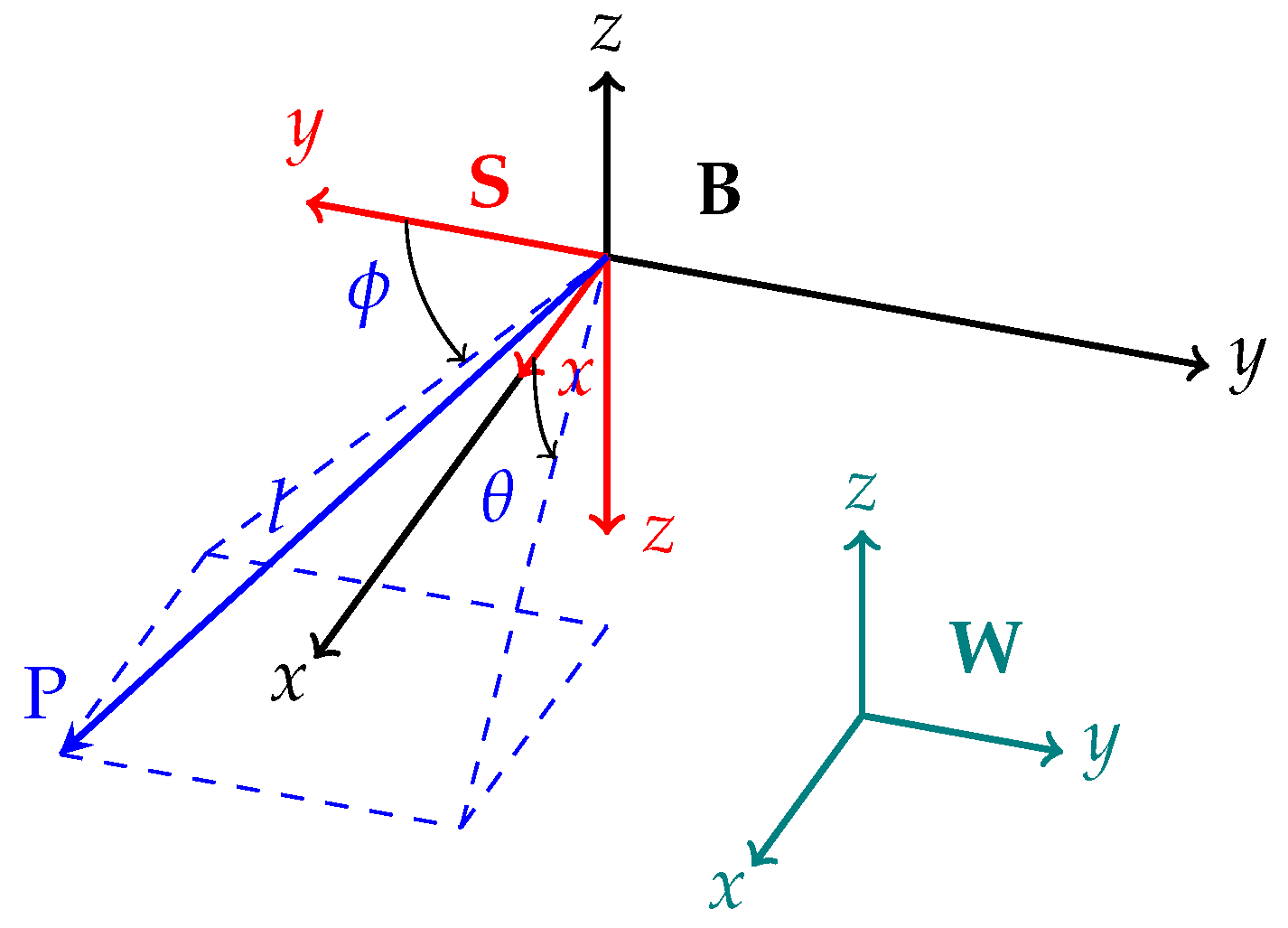
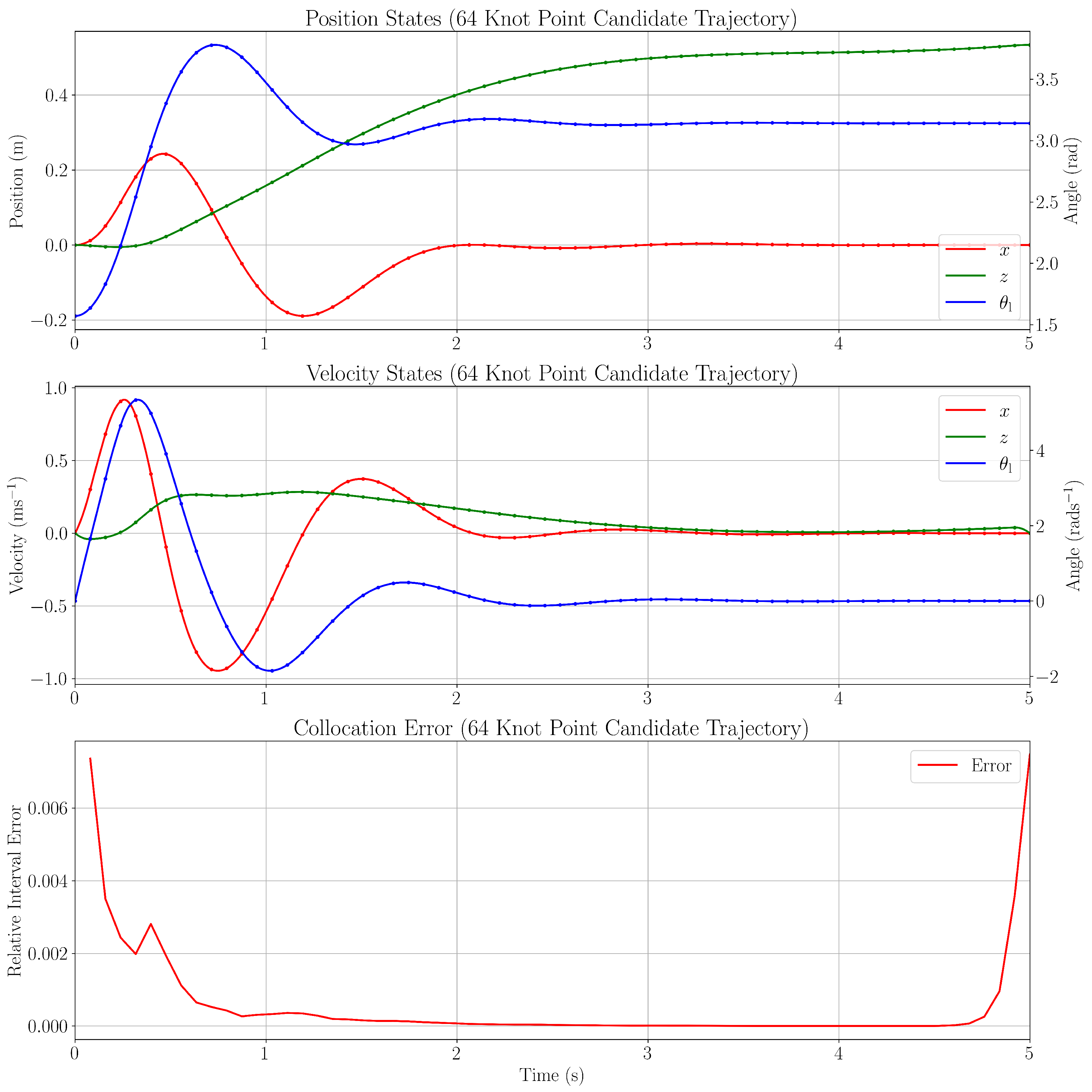


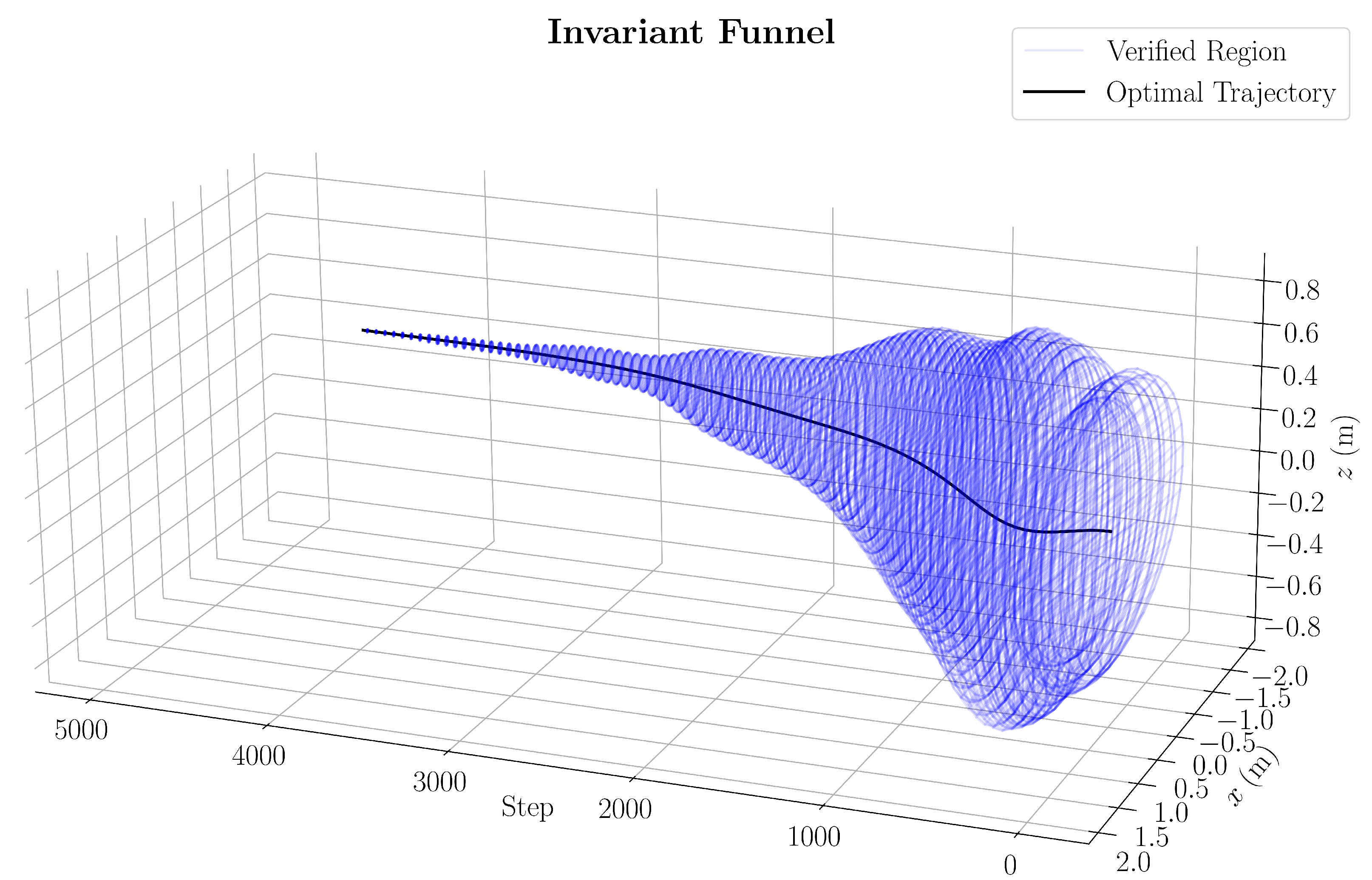
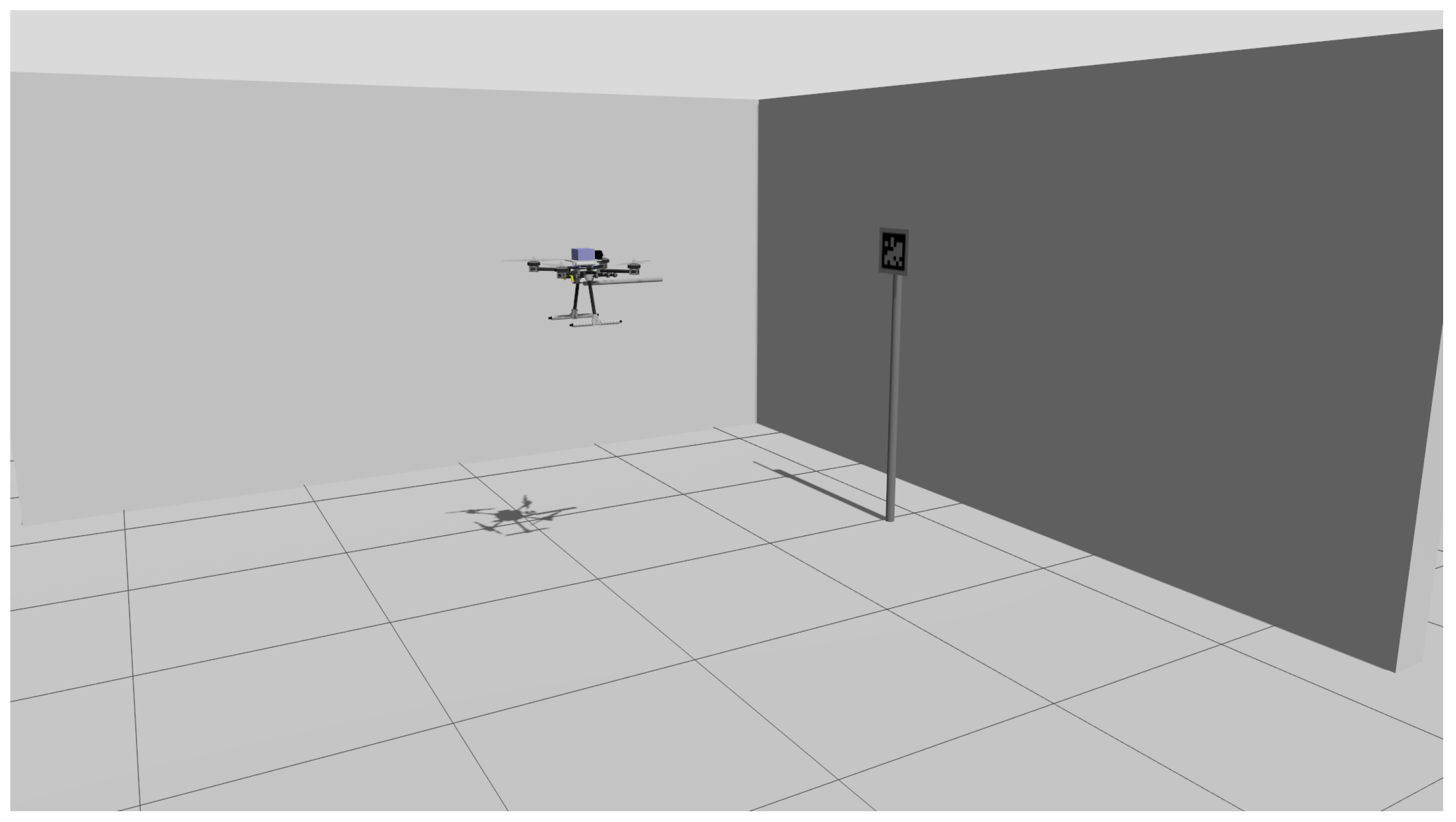
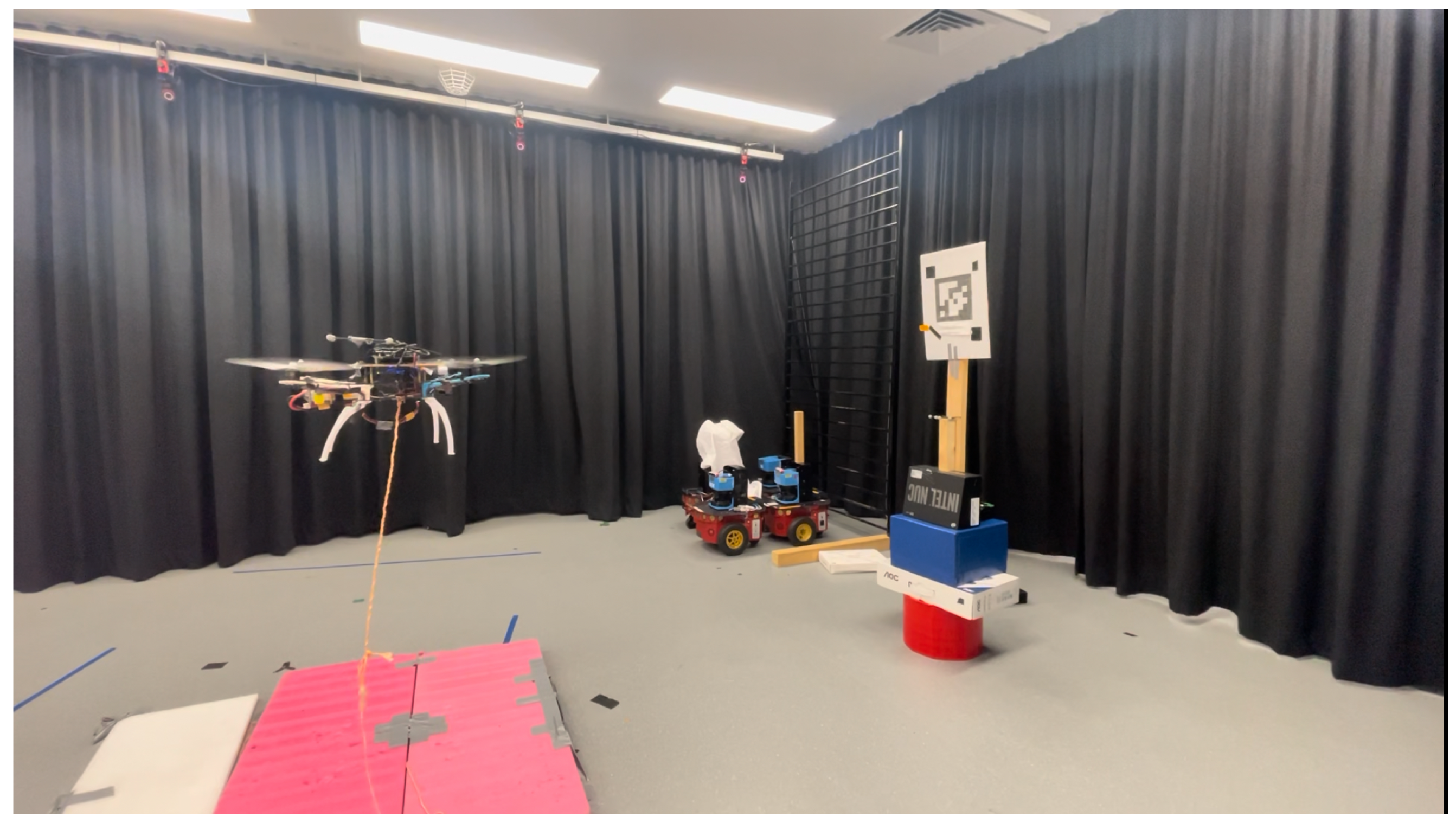
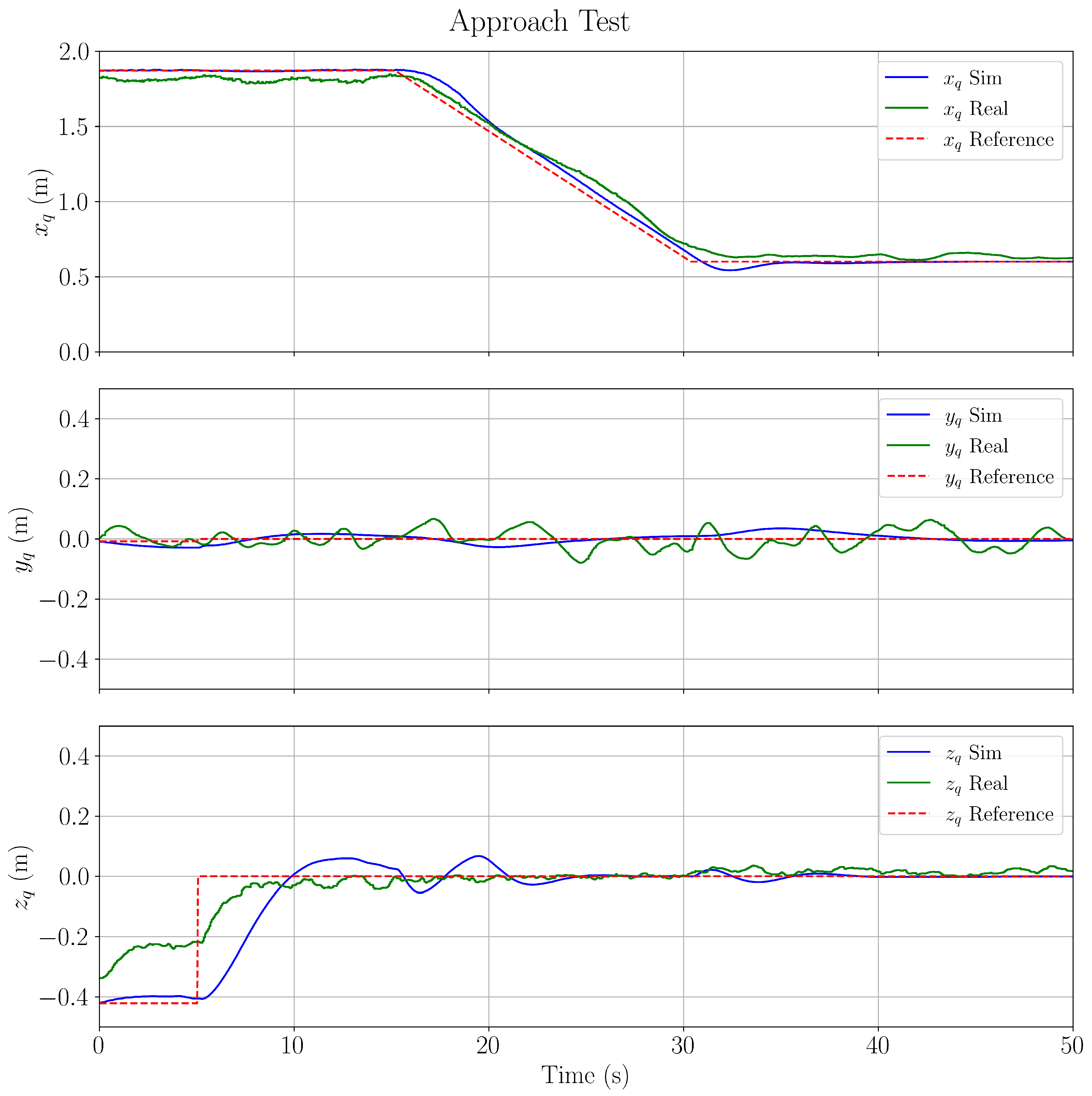
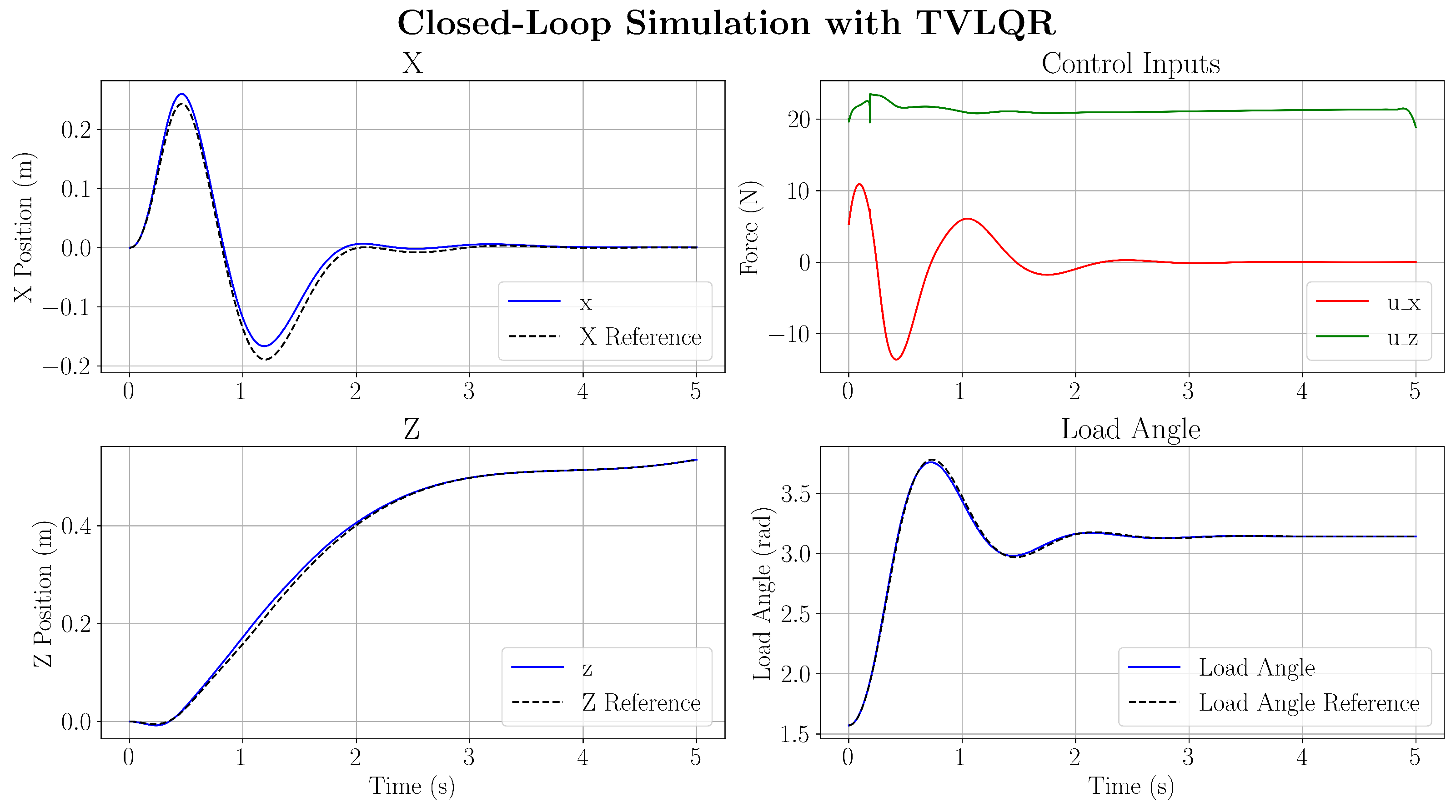
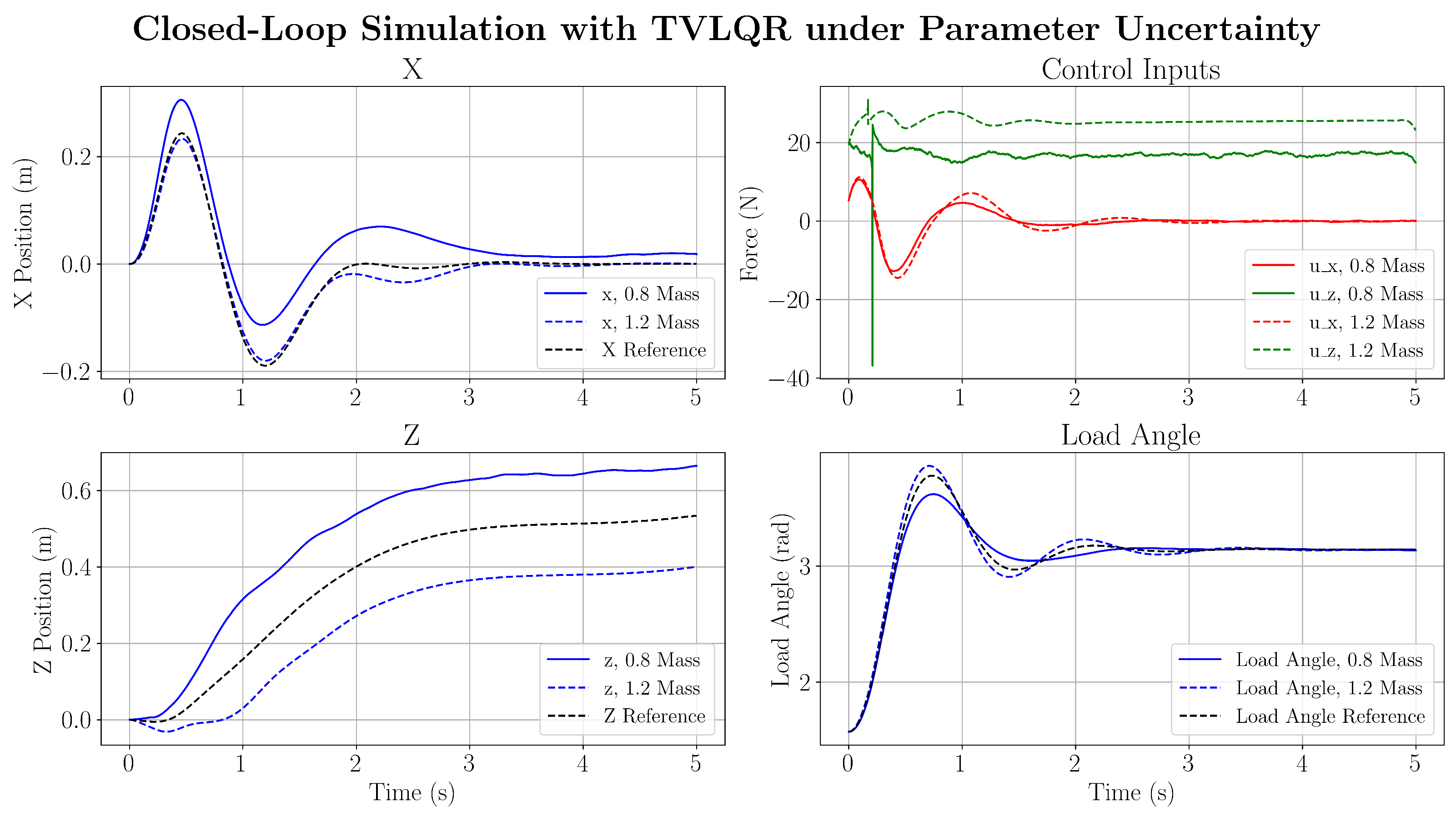
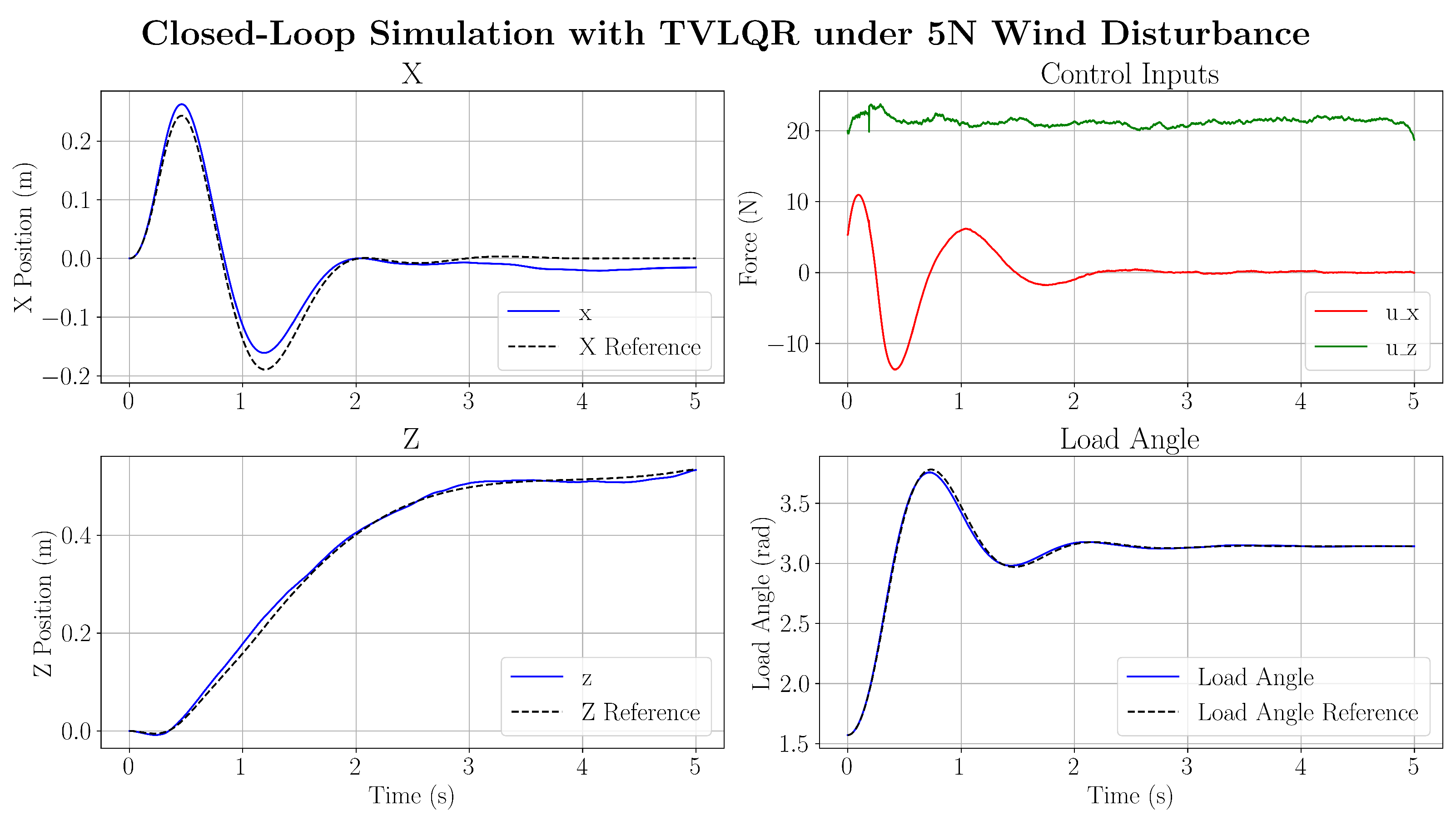
| Input | u (Min) | u (Max) |
|---|---|---|
| −30.0 | 30.0 | |
| −30.0 | 30.0 | |
| 0.0 | 25.0 | |
| −1.0 | 1.0 | |
| −1.0 | 1.0 | |
| −1.0 | 1.0 | |
| 0.0 | 0.0 | |
| 0.0 | 0.0 |
| State | xi (Min) | xi (Max) | xn (Min) | xn (Max) | xf (Min) | xf (Max) |
|---|---|---|---|---|---|---|
| 0.0 | 0.0 | −2.0 | 2.0 | −2.0 | 2.0 | |
| 0.0 | 0.0 | 0.0 | 0.0 | 0.0 | 0.0 | |
| 0.0 | 0.0 | −1.0 | 2.0 | −1.0 | 2.0 | |
| 0.0 | 0.0 | 0.0 | 0.0 | |||
| 0.0 | 0.0 | 0.0 | 0.0 | |||
| 0.0 | 0.0 | 0.0 | 0.0 | |||
| 0.0 | 0.0 | 0.0 | 0.0 | |||
| 0.0 | 0.0 | −5.0 | 5.0 | 0.0 | 0.0 | |
| 0.0 | 0.0 | −2.0 | 2.0 | 0.0 | 0.0 | |
| 0.0 | 0.0 | −5.0 | 5.0 | 0.0 | 0.0 | |
| 0.0 | 0.0 | −10.0 | 10.0 | 0.0 | 0.0 | |
| 0.0 | 0.0 | −10.0 | 10.0 | 0.0 | 0.0 | |
| 0.0 | 0.0 | −10.0 | 10.0 | 0.0 | 0.0 | |
| 0.0 | 0.0 | ∞ | 0.0 | 0.0 | ||
| 0.0 | 0.0 | ∞ | 0.0 | 0.0 |
| Library | System | Tag36h11 640 × 480 | Tag36h11 1280 × 720 | Tag36h11 1600 × 900 |
|---|---|---|---|---|
| AprilTag CUDA v1.0 | System: NVIDIA Jetson Orin Nano 8 GB CPU: 6-core ARM A78AE @ 1.98 GHz GPU: 1024-core Ampere | : 2.242 ms : 0.331 ms | : 13.113 ms : 0.383 ms | : 17.295 ms : 0.485 ms |
| AprilTag3 v3.4.4 | System: NVIDIA Jetson Orin Nano 8 GB CPU: 6-core ARM A78AE @ 1.98 GHz GPU: Unused | : 5.398 ms : 1.006 ms | : 46.839 ms : 7.346 ms | : 55.491 ms : 9.585 ms |
| AprilTag3 v3.4.4 | System: Intel NUC5i7RYB CPU: 2-core Intel Core i7-5557U @ 3.10 GHz GPU: Unused | : 2.833 ms : 0.627 ms | : 42.172 ms : 2.377 ms | : 45.793 ms : 1.953 ms |
| Symbol | Definition | Value | Unit |
|---|---|---|---|
| g | Gravitational acceleration | 9.810 | m s −2 |
| Load mass | 0.100 | kg | |
| Quadrotor mass | 2.064 | kg | |
| l | Arm Length | 0.500 | m |
| , , | Quadcopter Damping Coefficients | 0.000 | N m−1 |
| Payload Damping Coefficient | 0.0129 | N m rad−1 | |
| Moment of inertia about x-axis | 0.00291 | kg m2 | |
| Moment of inertia about y-axis | 0.00291 | kg m2 | |
| Moment of inertia about z-axis | 0.00552 | kg m2 |
Disclaimer/Publisher’s Note: The statements, opinions and data contained in all publications are solely those of the individual author(s) and contributor(s) and not of MDPI and/or the editor(s). MDPI and/or the editor(s) disclaim responsibility for any injury to people or property resulting from any ideas, methods, instructions or products referred to in the content. |
© 2025 by the authors. Licensee MDPI, Basel, Switzerland. This article is an open access article distributed under the terms and conditions of the Creative Commons Attribution (CC BY) license (https://creativecommons.org/licenses/by/4.0/).
Share and Cite
Feng, B.; Khatamianfar, A. Load-Swing Attenuation in a Quadcopter–Payload System Through Trajectory Optimisation. Sensors 2025, 25, 5518. https://doi.org/10.3390/s25175518
Feng B, Khatamianfar A. Load-Swing Attenuation in a Quadcopter–Payload System Through Trajectory Optimisation. Sensors. 2025; 25(17):5518. https://doi.org/10.3390/s25175518
Chicago/Turabian StyleFeng, Barry, and Arash Khatamianfar. 2025. "Load-Swing Attenuation in a Quadcopter–Payload System Through Trajectory Optimisation" Sensors 25, no. 17: 5518. https://doi.org/10.3390/s25175518
APA StyleFeng, B., & Khatamianfar, A. (2025). Load-Swing Attenuation in a Quadcopter–Payload System Through Trajectory Optimisation. Sensors, 25(17), 5518. https://doi.org/10.3390/s25175518






